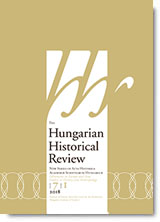Some Thoughts on the Translation and Interpretation of Terms Describing Turkic Peoples in Medieval Arabic Sources
Some Thoughts on the Translation and Interpretation of Terms Describing Turkic Peoples in Medieval Arabic Sources
Author(s): Zsuzsanna ZsidaiSubject(s): Ethnohistory
Published by: Magyar Tudományos Akadémia Bölcsészettudományi Kutatóközpont Történettudományi Intézet
Keywords: Turks; ethnonyms; Eurasia; Arabic sources
Summary/Abstract: The identification of the various peoples who lived on the medieval Eurasian Steppe has always been an engaging problem among scholars of the early history of this territory. The Arabs came into contact with Central Asian peoples from the beginning in the seventh century, during the course of the Islamic conquest. Hence, one finds many details about the peoples of the Steppe in the Arabic sources. The Arabic geographer Ibn Rusta mentions the Hungarians among the Turkic peoples in the beginning of the tenth century. However, according to the Arabic sources, there were many Turkic tribes or peoples in different regions, such in Ferghana, Khorasan, Transoxania, Samarqand, and near Armenia. Based on this fact, the term “Turk” can be interpreted in different ways. My aim is to indicate some of the difficulties concerning the translation and interpretation of the terms referring to peoples or tribes, such as “jins” and “qawm,” and to give some examples of occurrences of the ethnonym “Turk” in medieval Arabic texts. I begin with a discussion of the relevant methodological questions and then argue that the designation “Turk” should be used more cautiously as a group-identifying term in the wider context of the early Medieval world of the Eurasian Steppe.
Journal: The Hungarian historical review : new series of Acta Historica Academiae Scientiarum Hungaricae
- Issue Year: 7/2018
- Issue No: 1
- Page Range: 57-81
- Page Count: 25
- Language: English

